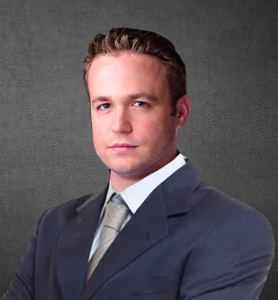
An accident can happen anytime, so knowing what to do next is crucial. At Lerner Law Injury & Accident Firm, our personal injury lawyers will defend your rights and protect your interests. Our personal injury law firm has handled countless cases, and we would be happy to review your case.
Know more about how our personal injury attorneys can help you, and give us a call to schedule a free consultation.

Navigating the intricate waters of a personal injury case can be overwhelming – especially while recovering from your injuries. That's where the experienced team at Lerner Law Injury & Accident Firm steps in. Our dedicated Los Angeles personal injury attorney can help you in the following key areas:
We're here to provide you with top-notch legal representation while you focus on your recovery.
Personal injury laws vary by state. In California, these laws primarily revolve around the legal concept of negligence. This is when someone's carelessness or recklessness causes harm to another person.
One important aspect of California's personal injury law is the "comparative negligence" rule. It could reduce your compensation if you're found to be partially responsible for your injuries.
Another crucial detail is the statute of limitations, which sets a deadline for filing a personal injury lawsuit in the state's civil court system. Understanding these laws and more is crucial for a successful claim. Our experienced and skilled Los Angeles personal injury attorney can guide you through them.
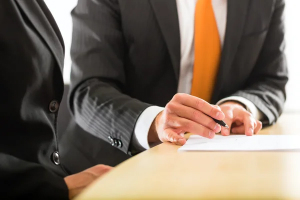
Personal injuries may occur in a variety of circumstances. Some of the common types of personal injury cases we handle include:
Car accidents are a leading cause of personal injury claims in Los Angeles. A moment's carelessness or negligence on the road can lead to severe injuries or even death. Negligent driving includes speeding, failing to yield, or running red lights. These actions not only violate traffic laws but also put the safety of others at risk.
Distracted driving can also lead to a motor vehicle accident. This can involve texting while driving, adjusting the radio, eating, or even talking to passengers. Despite laws prohibiting such actions, many drivers continue to engage in these dangerous behaviors. They put themselves and others at risk. This could even lead to a wrongful death.
Drunk driving is another serious issue. Despite strict DUI laws, some drivers still choose to get behind the wheel while intoxicated. This impairs their ability to drive safely. Victims of drunk drivers can suffer severe injuries or even lose their lives.
These accidents, also known as premises liability cases, may occur when property owners fail to maintain safe conditions on their premises. This can include public spaces like grocery stores and restaurants. They can also have private properties such as homes or apartment buildings.
Hazardous conditions can lead to a slip-and-fall accident. Examples include wet or slippery floors, cluttered walkways, loose carpeting, or poorly lit areas. When property owners fail to address these issues promptly, people are put at risk.
Injuries from these accidents can range from minor bruises to severe injuries. Examples include spinal cord injuries or traumatic brain injuries. The extent of these injuries can lead to significant medical bills, loss of income, and emotional distress.
This may occur if a healthcare professional makes a mistake that causes patient harm. This could include diagnosis, treatment, aftercare, or health management errors. To be considered malpractice, these errors must deviate from the accepted standards of medical practice. Not every poor outcome is malpractice.
Some common examples of medical malpractice include surgical errors, where a surgeon might operate on the wrong body part or leave a surgical instrument inside a patient. Misdiagnosis is another form of malpractice. This is where a healthcare provider fails to accurately diagnose a patient's condition, leading to incorrect or delayed treatment.
These accidents can occur in any industry but are particularly prevalent in the construction, manufacturing, and transportation sectors. These accidents can range from falls from heights to equipment-related accidents. It can also include exposure to harmful substances and repetitive strain injuries.
Falls, whether from heights or on the same level, can cause severe injuries like fractures, sprains, and traumatic brain injuries. Equipment-related accidents can occur when machinery malfunctions or when employees aren't adequately trained to use them.
Exposure to harmful substances can lead to serious health issues, including respiratory diseases, skin conditions, and even cancer. Repetitive strain injuries, such as carpal tunnel syndrome or tendonitis, are often caused by repetitive movements or awkward postures over a long period.
This pertains to a seller or manufacturer being held responsible for putting a dangerous product in the hands of a customer. Products must meet the consumer's ordinary expectations, and a product with an unexpected defect or danger does not meet these expectations.
This defect could include the product's design, manufacture, or even marketing. Design defects are inherent; they exist before the product is manufactured. While the item might serve its purpose well, it can be unreasonably dangerous to use due to a design flaw.
On the other hand, manufacturing defects happen during the construction or production of the item. In this scenario, only a few of many products of the same type may need to be revised. Marketing defects can occur when there is insufficient instruction or warnings on how to safely use the product, misleading consumers and leading to injury.
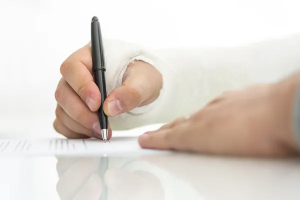
Four key elements must be established for a claim to succeed:
Duty of care is a legal obligation that requires an individual or entity to exercise reasonable care to avoid causing harm to others. This principle is fundamental to any personal injury claim. The nature and extent of the duty may vary depending on the relationship between the parties. For example, drivers have a duty of care to other road users to drive safely and obey traffic laws.
In some situations, establishing a duty of care is straightforward. For example, a doctor has a duty of care to their patients, and a business owner has a duty of care to their customers. However, in other situations, it might be more complex and require the skills of an experienced personal injury attorney to establish this legal obligation.
This occurs when one party fails to fulfill their duty of care towards another, thereby behaving negligently or recklessly. In a personal injury case, proving this element is crucial. This involves demonstrating that the defendant's actions deviated from what a reasonably prudent person would do under the same circumstances.
Establishing a breach of duty can involve examining the defendant's behavior, the circumstances leading to the injury, and whether a reasonable person could foresee the harm caused by the defendant's actions. Evidence such as eyewitness testimony, photographs, video footage, and expert testimony can all play a role in proving a breach of duty.
Causation, in the context of a personal injury claim, involves proving that the defendant's breach of duty directly caused the plaintiff's injuries. It's not enough to show that the defendant was negligent - the plaintiff must also show that this negligence was the actual cause of their harm.
Proving causation can be complex, particularly in cases where the plaintiff had pre-existing conditions. Medical records, accident reports, and expert testimony can be essential in establishing causation in a personal injury claim.
Damages in a personal injury case refer to the losses suffered by the plaintiff due to the defendant's negligent actions. Damages can be economic, such as medical bills and lost wages, or non-economic, such as pain and suffering or loss of enjoyment of life.
To recover damages, a plaintiff must provide evidence to support their claim. This includes medical bills, pay stubs, and other documents demonstrating financial loss. Proof of non-economic damages often includes testimony from the plaintiff and their loved ones about the impact of the injury on the plaintiff's quality of life.
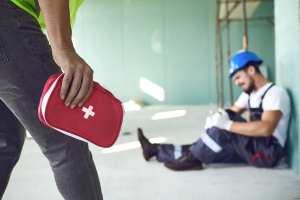
When you've been injured due to someone else's negligence, your actions immediately following the incident can significantly influence the outcome of your potential personal injury claim. Acting with the presence of mind and taking the proper steps can put you in a stronger position to seek the compensation you deserve.
Taking these steps can help you preserve vital evidence, receive necessary medical care, and establish a clear timeline of events. This is particularly true after a motor accident or car accident. Contacting an experienced personal injury attorney early can ensure that your case is handled professionally, maximizing your chances of receiving the compensation you deserve. The Lerner Law Injury & Accident Firm team is here to guide and support you throughout this challenging time.
A few challenges your Southern California personal injury claim might encounter include:
Insurance companies often aim to minimize payouts. They might try to deny your claim, delay the process, or offer a low settlement. Having a seasoned attorney can help you navigate these tactics.
California's comparative negligence law can decrease your compensation if you're found to be partially at fault. A skilled lawyer can counter any attempts to assign you a higher degree of fault unfairly.
In California, personal injury claims generally must be filed within two years of the injury, but depending on the circumstances, it may be earlier than two years. Meeting this deadline can ensure you retain your right to compensation. An attorney provides timely filing of all necessary documents.
If you need the best personal injury lawyer in Los Angeles, CA, look no further than our team.
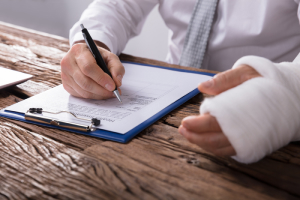
Depending on the specifics of your case, you might be entitled to various types of compensation:
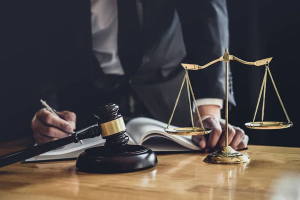
If you or a loved one has suffered a personal injury, don't delay getting the legal help you need. Contact Lerner Law Injury & Accident Firm today to schedule a free consultation with our Los Angeles personal injury lawyer.
Let us fight for the justice and compensation you rightly deserve.
Schedule Your Free
Consultation
"*" indicates required fields
"*" indicates required fields